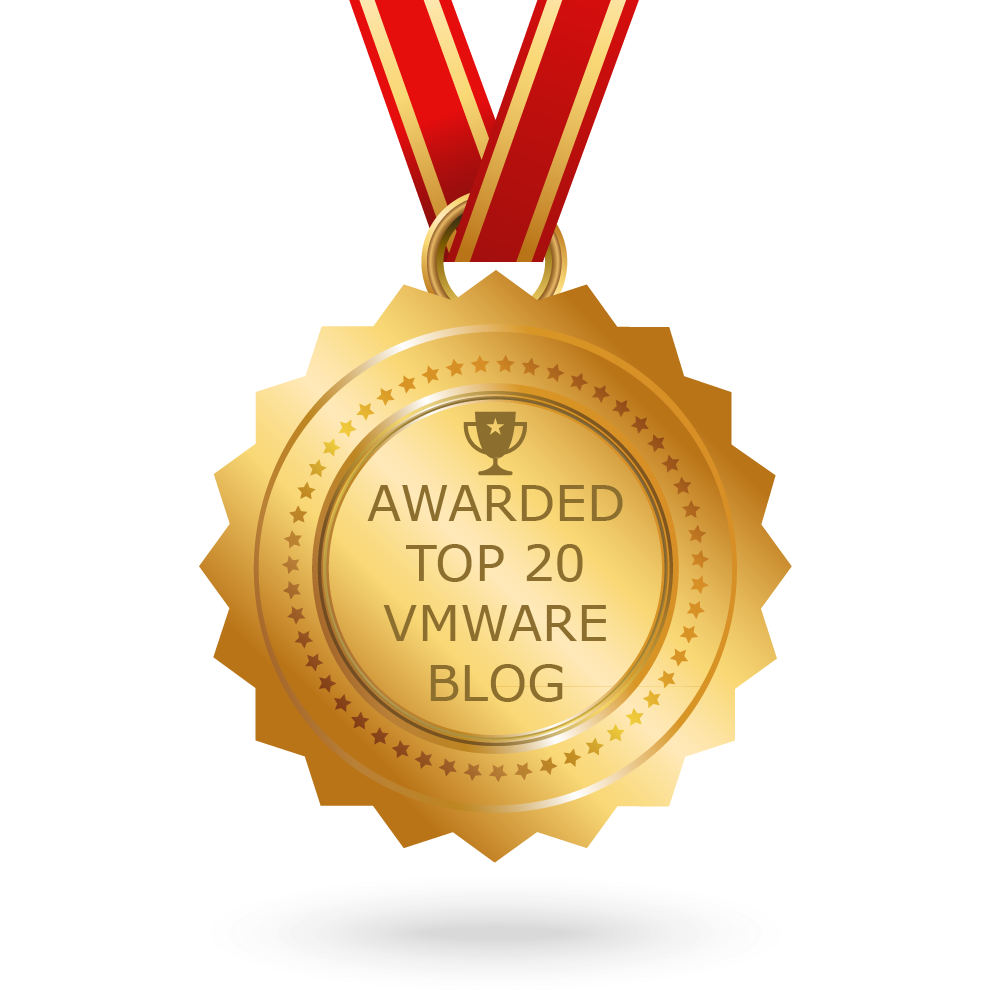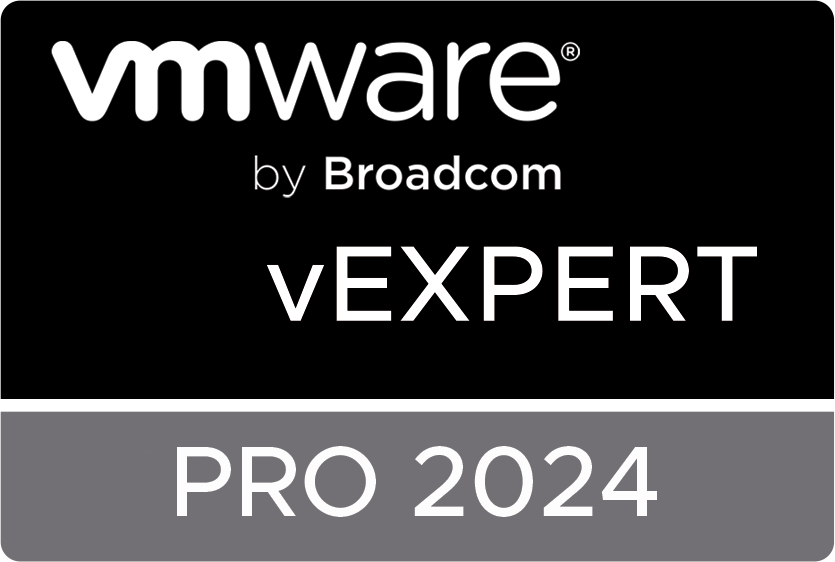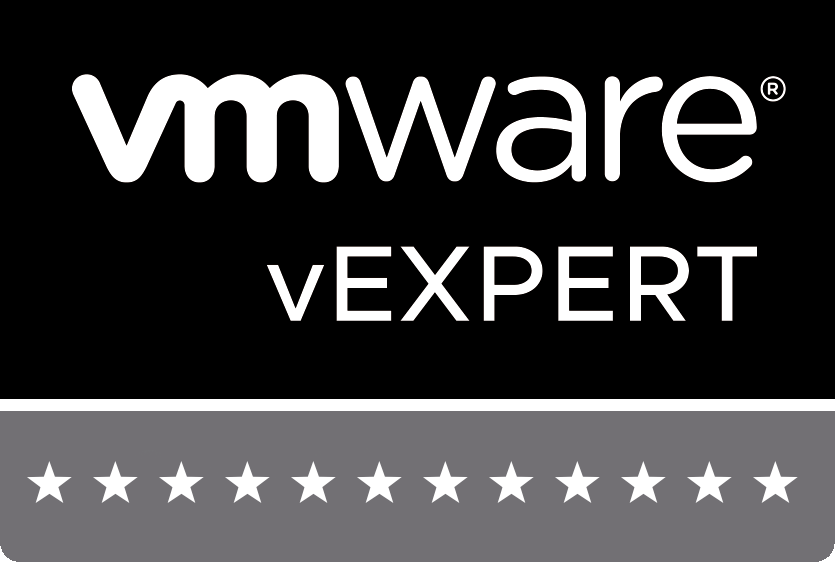|
On August 26 at VMworld 2013 VMware announced vSphere 5.5, the latest release of VMware's industry-leading virtualization platform. This latest release includes a lot of improvements and many new features and capabilities. This is from the what's new paper.
Doubled Host-Level Configuration Maximums – vSphere 5.5 is capable of hosting any size workload; a fact that is punctuated by the doubling of several host-level configuration maximums. The maximum number of logical CPUs has doubled from 160 to 320, the number of NUMA nodes doubled from 8 to 16, the number of virtual CPUs has doubled from 2048 to 4096, and the amount of RAM has also doubled from 2TB to 4TB. There is virtually no workload that is too big for vSphere 5.5! Hot-pluggable PCIe SSD Devices – vSphere 5.5 provides the ability to perform hot-add and remove of SSD devices to/from a vSphere 5.5 host. With the increased adoption of SSD, having the ability to perform both orderly as well as unplanned SSD hot-add/remove operations is essential to protecting against downtime and improving host resiliency. Improved Power Management – ESXi 5.5 provides additional power savings by leveraging CPU deep process power states (C-states). By leveraging the deeper CPU sleep states ESXi can minimizes the amount of power consumed by idle CPUs during periods of inactivity. Along with the improved power savings comes additional performance boost on Intel chipsets as turbo mode frequencies can be reached more quickly when CPU cores are in a deep C-State. Virtual Machine Compatibility ESXi 5.5 (aka Virtual Hardware 10) – ESXi 5.5 provides a new Virtual Machine Compatibility level that includes support for a new virtual-SATA Advance Host Controller Interface (AHCI) with support for up to 120 virtual disk and CD-ROM devices per virtual machine. This new controller is of particular benefit when virtualizing Mac OS X as it allows you to present a SCSI based CD-ROM device to the guest. VM Latency Sensitivity – included with the new virtual machine compatibility level comes a new “Latency Sensitivity” setting that can be tuned to help reduce virtual machine latency. When the Latency sensitivity is set to high the hypervisor will try to reduce latency in the virtual machine by reserving memory, dedicating CPU cores and disabling network features that are prone to high latency. Expanded vGPU Support – vSphere 5.5 extends VMware’s hardware-accelerated virtual 3D graphics support (vSGA) to include GPUs from AMD. The multi-vendor approach provides customers with more flexibility in the data center for Horizon View virtual desktop workloads. In addition 5.5 enhances the “Automatic” rendering by enabling the migration of virtual machines with 3D graphics enabled between hosts running GPUs from different hardware vendors as well as between hosts that are limited to software backed graphics rendering. Graphics Acceleration for Linux Guests – vShere 5.5 also provides out of the box graphics acceleration for modern GNU/Linux distributions that include VMware’s guest driver stack, which was developed by VMware and made available to all Linux vendors at no additional cost. vCenter Single Sign-On (SSO) – in vSphere 5.5 SSO comes with many improvements. There is no longer an external database required for the SSO server, which together with the vastly improved installation experience helps to simplify the deployment of SSO for both new installations as well as upgrades from earlier versions. This latest release of SSO provides enhanced active directory integration to include support for multiple forest as well as one-way and two-way trusts. In addition, a new multi-master architecture provides built in availability that helps not only improve resiliency for the authentication service, but also helps to simplify the overall SSO architecture. vSphere Web Client – the web client in vSphere 5.5 also comes with several notable enhancements. The web client is now supported on Mac OS X, to include the ability to access virtual machine consoles, attach client devices and deploy OVF templates. In addition there have been several usability improvements to include support for drag and drop operations, improved filters to help refine search criteria and make it easy to find objects, and the introduction of a new “Recent Items” icon that makes it easier to navigate between commonly used views. vCenter Server Appliance – with vSphere 5.5 the vCenter Server Appliance (VCSA) now uses a reengineered, embedded vPostgres database that offers improved scalability. I wasn’t able to officially confirm the max number of hosts and VMs that will be supported with the embedded DB. They are targeting 100 hosts and 3,000 VMs but we’ll need to wait until 5.5 releases to confirm these numbers. However, regardless what the final numbers are, with this improved scalability the VCSA is a very attractive alternative for folks who may be looking to move a way from a Windows based vCenter. vSphere App HA – App HA brings application awareness to vSphere HA helping to further improve application uptime. vSphere App HA works together with VMware vFabric Hyperic Server to monitor application services running inside the virtual machine, and when issues are detected perform restart actions as defined by the administrator in the vSphere App HA Policy. vSphere HA Compatibility with DRS Anti-Affinity Rules –vSphere HA will now honor DRS anti-affinity rules when restarting virtual machines. If you have anti-affinity rules defined in DRS that keep selected virtual machines on separate hosts, VMware HA will now honor those rules when restarting virtual machines following a host failure. vSphere Big Data Extensions(BDE) – Big Data Extensions is a new addition to the VMware vSphere Enterprise and Enterprise Plus editions. BDE is a vSphere plug-in that enables administrators to deploy and manage Hadoop clusters on vSphere using the vSphere web client. Support for 62TB VMDK – vSphere 5.5 increases the maximum size of a virtual machine disk file (VMDK) to 62TB (note the maximum VMFS volume size is 64TB where the max VMDK file size is 62TB). The maximum size for a Raw Device Mapping (RDM) has also been increased to 62TB. Microsoft Cluster Server (MCSC) Updates – MSCS clusters running on vSphere 5.5 now support Microsoft Windows 2012, round-robin path policy for shared storage, and iSCSI and Fibre Channel over Ethernet (FCoE) for shared storage. 16Gb End-to-End Support – In vsphere 5.5 16Gb end-to-end FC support is now available. Both the HBAs and array controllers can run at 16Gb as long as the FC switch between the initiator and target supports it. Auto Remove of Devices on PDL – This feature automatically removes a device from a host when it enters a Permanent Device Loss (PDL) state. Each vSphere host is limited to 255 disk devices, removing devices that are in a PDL state prevents failed devices from occupying a device slot. VAAI UNMAP Improvements – vSphere 5.5 provides and new “esxcli storage vmfs unmap” command with the ability to specify the reclaim size in blocks, opposed to just a percentage, along with the ability to reclaim space in increments rather than all at once. VMFS Heap Improvements – vSphere 5.5 introduces a much improved heap eviction process, which eliminates the need for large heap sizes. With vSphere 5.5 a maximum of 256MB of heap is needed to enable vSphere hosts to access the entire address space of a 64TB VMFS. vSphere Flash Read Cache – a new flash-based storage solution that enables the pooling of multiple flash-based devices into a single consumable vSphere construct called a vSphere Flash Resource, which can be used to enhance virtual machine performance by accelerating read-intensive workloads. Link Aggregation Control Protocol (LACP) Enhancements – with the vSphere Distributed Switch in vSphere 5.5 LACP now supports 22 new hashing algorithms, support for up to 64 Link Aggregation Groups (LAGs), and new workflows to help configure LACP across large numbers of hosts. Traffic Filtering Enhancements – the vSphere Distributed Switch now supports packet classification and filtering based on MAC SA and DA qualifiers, traffic type qualifiers (i.e. vMotion, Management, FT), and IP qualifiers (i.e. protocol, IP SA, IP DA, and port number). Quality of Service Tagging – vSphere 5.5 adds support for Differentiated Service Code Point (DCSP) marking. DSCP marking support enables users to insert tags in the IP header which helps in layer 3 environments where physical routers function better with an IP header tag than with an Ethernet header tag. Single-Root I/O Virtualization (SR-IOV) Enhancements – vSphere 5.5 provides improved workflows for configuring SR-IOV as well as the ability to propagate port group properties to up to the virtual functions. Enhanced Host-Level Packet Capture – vSphere 5.5 provides an enhanced host-level packet capture tool that is equivalent to the command-line tcpdump tool available on the Linux platform. 40GB NIC Support – vSphere 5.5 provides support for 40GB NICs. In 5.5 the functionality is limited to the Mellanox ConnectX-3 VPI adapters configured in Ethernet mode. vSphere Data Protection (VDP) – VDP has also been updated in 5.5 with several great improvements to include the ability to replicate backup data to EMC Avamar, direct-to-host emergency restore, the ability to backup and restore of individual .vmdk files, more granular scheduling for backup and replication jobs, and the ability to mount existing VDP backup data partitions when deploying a new VDP appliance.
0 Comments
|
RecognitionCategories
All
Archives
June 2024
|








 RSS Feed
RSS Feed